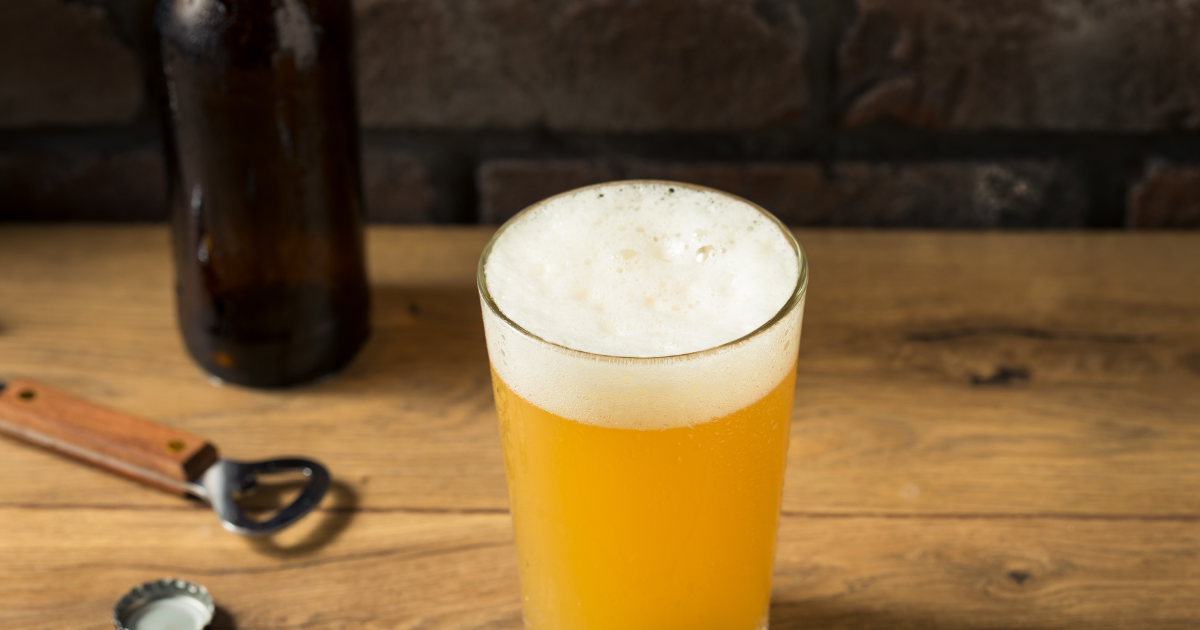Attempt #1: Failing to treat the water properly
I’m the first to admit that I have struggled to make good New England IPA (NEIPA). My journey to making a good version of this popular and delicious style has been nothing short of frustrating. My first attempt was jinxed with a rookie mistake: I forgot to treat my water with Campden tablets.
I was so focused on making sure I had the right ratio of sulphate and calcium chloride (an important adjustment for this style), that I overlooked the more basic and important part of water chemistry: removing chloramine! I brewed a beer that had a wonderful tropical aroma and was convinced I had nailed my first attempt. Of course, if you have ever had beer made with chloramine, it’s disgusting. Careless mistake, I thought. Little did I know, this was the start of a long journey with this beer style.
Attempt #2: Oxidized beer (or so I thought)
I immediately shook off the embarrassment of the first batch, dumped this once-promising beer down the drain and walked back down to my local homebrew shop to get another round of ingredients.
The next attempt was better but still disappointing.
Yes, I remembered to treat the water properly but was thoroughly disappointed when I went to task my first bottle two weeks after bottling day. It tasted stale and had turned a grey colour. With this being a hoppy style, I assumed I had done a poor job of bottling, clearly oxidizing the beer, right? (I would later discover that the colour change with NEIPA may not be the result of oxidation. We still don’t fully understand what causes this colour change).
I decided to get a couple of confidence-boosting brews under my belt to clear my mind before returning to NEIPA one month later.
Attempt #3: Conditioning Time
For this third batch (still thinking I was guilty of oxidizing the last batch), I paid obsessive detail to my bottling technique. I marked off the bottles that had a touch of splashing during the transfer from those that had a “clean”, splash-less, bubble-less intake of beer. Using the “clean” bottles for tasting and evaluation, I tasted my first bottle after one week. It was promising. The aroma was on point, and the colour had kept (mostly) orange, although not with the same level of brightness it had on bottling day.
One week later (two weeks after bottling day), I had my next tasting and was horrified.
The colour had darkened and turned a grey/purple colour, again!
It tasted mostly fine, but the colour was just unappetizing.
Maybe it was just this one bottle? I opened two more, and they suffered from the same colour defect.
This was frustrating.
Attempt #4: Expedited Conditioning Time
I gave it another go, but this time decided to break some long-held rules. If you know me well, you know that I advocate for waiting at least 14 days—if not 30 days—after bottling your beer to taste and evaluate it. I have found that most of my beers have tasted optimal after those 30 days. I always knew that hoppy beers need to be consumed quickly, while fresh, but I thought a 30-day window was still very fresh. Well, I was going to ditch that thinking for this next batch.
I once again paid special attention to water chemistry, and to my bottling techniques. But this time I:
- Conditioned for 5 days, tasted it, found it tasted pretty damn good, and then…
- Immediately transferred all my bottles to the fridge.
- Drank all the bottles within three weeks of bottling day.
And guess what? It worked!
It would appear that NEIPA responds differently to bottle conditioning than other styles, at least in a way that is visible to the naked eye. And it’s not just me. The good folks at Brülosophy have tested the impact of bottle conditioning vs. forced carbonation on this style, and have found some good and bad news.
The bad news? Bottle conditioning does have a noticeable impact on appearance. It wasn’t just me. You should read the findings of the experiment to see it with your own eyes.
The good news? In the experiment, participants could not detect a difference in flavour.
It would appear that time is our worst enemy when it comes to conditioning this beer. We need to drink it very quickly after bottling it if we want to avoid the purple/grey haze.
How to make good bottle-conditioned NEIPA
If you’re going to brew this style, pick one of my NEIPA recipes, and apply what I have learned through trial and error:
- Pay extra care on bottling day to minimize oxygen. More than you would for any other style. Make sure the hoses are properly fitted on the bottle filler and to the spigot or auto-siphon.
- Condition for 3-6 days at room temperature. The timing is dependent on your own taste, desired carbonation level, and how long you’re willing to wait before you slow the ageing process (next step).
- Taste a sample, and if you like it, chill the whole batch right away. This is the only way you can slow the ageing process and buy yourself some time (although not too much time).
- Drink within 2-3 weeks of chilling. This is not a style that ages well. It needs to be consumed as soon as it has been carbonated to your liking. The longer you wait, the more it will degrade.
For my next batch, I am going to experiment with filling some bottles up to the top, reducing the headspace. According to some enterprising home brewers, this trick has done wonders. I’ll update this guide accordingly, should I get any luck with that.
What are your tips? Have you experimented with this style? Share your findings with us so we can learn together.
Happy brewing!


Leave a Reply